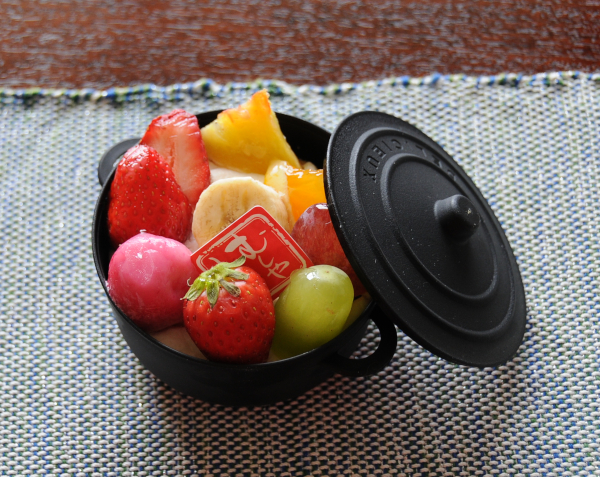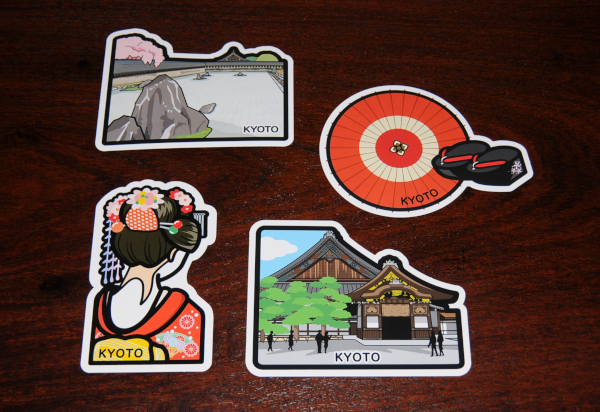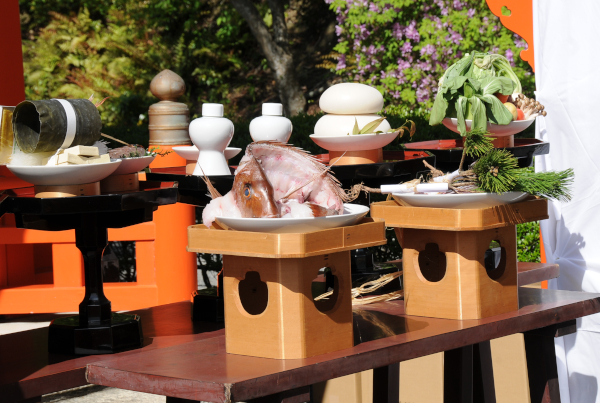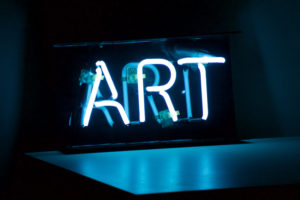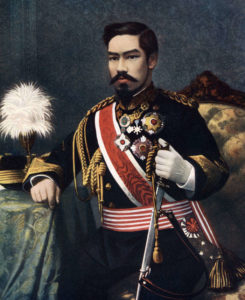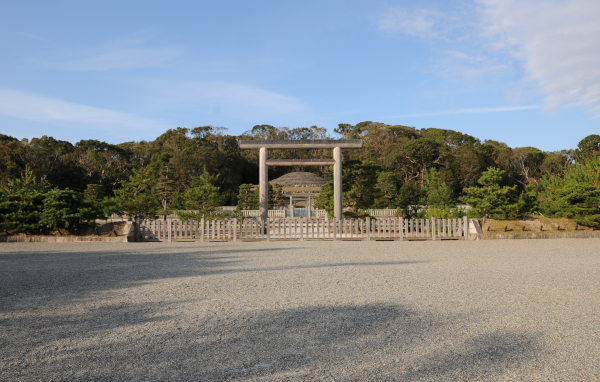A few weeks ago, I had the opportunity (through What’s up in Kyoto) to take part in a sake tasting in Fushimi, a southern part of Kyoto. The experience is well worth sharing – and recommending! – so here are the details:
I had made an appointment with Kotaro, founder and CEO of Kyoto Sake Experience, who conducts most of the sake tastings himself. We met near Fushimi Momoyama station, and first talked briefly about what I could expect – and about Kotaro himself. He grew up in Fushimi and spent a few years in Australia, so his English is excellent. He is very passionate about sake and was happy to answer, and could sometimes even preempt, my questions. In fact, he recommends taking a sake class as the very first thing to do in Japan, so people have time to find out what type of sake they like best and to be able to fully enjoy it on their visit – and take a few bottles of their favourite back home in the end!
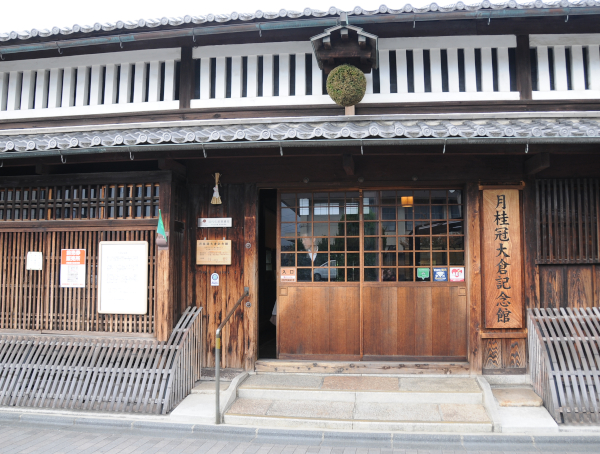 Anyway, after our brief talk, we headed to the Gekkeikan Sake Brewery, one of the largest and oldest sake breweries of Japan. They have a sake museum, and Kotaro uses its exhibits to explain the intricacies of sake, starting out with the rice. Rice meant for sake is different from rice meant for eating; it has longer stalks and contains more starch, both of which makes it about twice as expensive as food rice.
Anyway, after our brief talk, we headed to the Gekkeikan Sake Brewery, one of the largest and oldest sake breweries of Japan. They have a sake museum, and Kotaro uses its exhibits to explain the intricacies of sake, starting out with the rice. Rice meant for sake is different from rice meant for eating; it has longer stalks and contains more starch, both of which makes it about twice as expensive as food rice.
Once the rice is harvested, it is polished, and since the flavour lies in the hull of the rice, the smaller the remaining grain (i.e., the higher the polishing rate), the more pure starch is there, and the better (that is, sweeter and more fruity) the resulting sake. The highest grade for sake, daiginjo, has a polishing rate of 50% or more.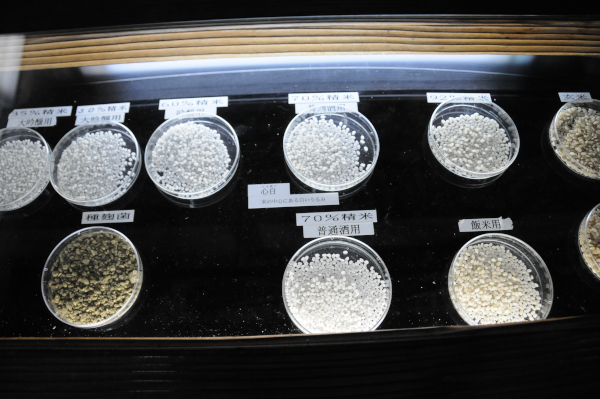
As first step the rice is steamed and cooled down to 30 degrees before adding koji mold. This mold is meant to break down the starch into sugar, and many breweries have their own type of carefully guarded koji. Only very little is needed to start the procedure, but since the koji is very temperature-sensitive, it must be checked every couple of hours. After two days, the procedure is finished and we have kome koji, mouldy rice.
Now it is time to make moto, a mixture of kome koji, fresh steamed rice, water and yeast. There are about 30 different yeast cultures that are shared property of all sake breweries, and each culture gives a certain flavour in the end. Making the moto takes about two weeks, this is essentially the starter culture for the final fermentation that starts afterwards.
To the finished moto is again added more kome koji, fresh steamed rice, and water, and now the fermentation can begin in earnest and in very large barrels. In this step, the koji continues to produce sugar so there is constant supply of food for the yeast that turns the sugar into alcohol. However, after 27 days when the alcohol content is 22% (genshu sake), this process comes to a natural end and the sake is finished.
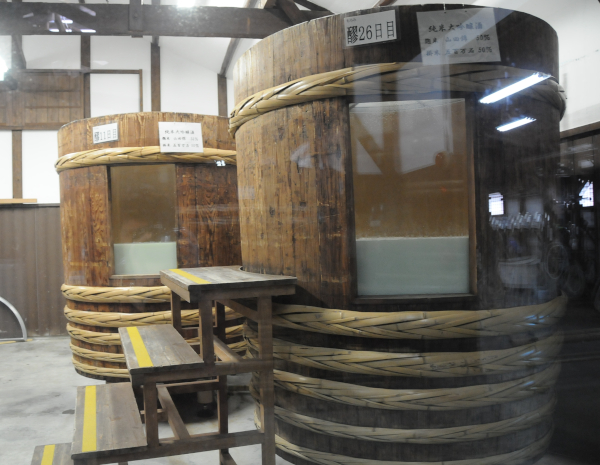 Technically, that is, because now the raw sake is pressed, filtered, pasteurised, and diluted in a series of different steps. Special types of sake are taken out of this process early, for example namazake is not pasteurised. However, the sake that is usually available at stores or restaurants underwent the whole process. It has a final alcohol percentage of around 15% and is divided into several types, according to the original polishing rate of the rice.
Technically, that is, because now the raw sake is pressed, filtered, pasteurised, and diluted in a series of different steps. Special types of sake are taken out of this process early, for example namazake is not pasteurised. However, the sake that is usually available at stores or restaurants underwent the whole process. It has a final alcohol percentage of around 15% and is divided into several types, according to the original polishing rate of the rice.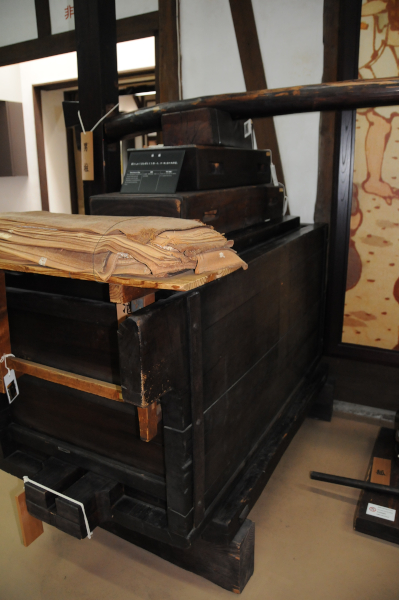
We have for example daiginjo with a polishing rate of 50% or more, or ginjo with 50-60% of the grain remaining. Daiginjo often has a fruity taste, which is enhanced by adding distilled alcohol. Pure rice sake, consisting only of rice, water, yeast, and koji, has a somewhat stronger taste and gets the prefix junmai.
That was already an enormous amount of information, and my head was spinning before the very first cup! But now the sake tasting started, back at the place where we started. There were 7 different types of sake waiting for our return, three special ones and four standard ones, for two rounds of tasting.
In the first round I was to drink the sake pure, and my favourite turned out to be the daiginjo with a very fruity taste, and, unfortunately, it is the most expensive one. Remember that the polishing rate is highest, so there is more sake rice needed to produce it. I also liked nigori, a type of sake that is not fully filtered (it reminds me of Austrian Sturm, another story).
 In the second round, the same sake was paired with different types of food, and here it shows that Kotaro had been working as a chef. This time, the winner was much less clear. Like with European wine, it is important to balance food and drink, so that they are either balanced in strength of taste (daiginjo with soy beans has a very delicate taste) or strongly complementary (a 5-year-old sake together with cream cheese led to a taste explosion). The difference in the taste of sake together with the food compared to without it was phenomenal, and even though I am not a gourmet, it was obvious.
In the second round, the same sake was paired with different types of food, and here it shows that Kotaro had been working as a chef. This time, the winner was much less clear. Like with European wine, it is important to balance food and drink, so that they are either balanced in strength of taste (daiginjo with soy beans has a very delicate taste) or strongly complementary (a 5-year-old sake together with cream cheese led to a taste explosion). The difference in the taste of sake together with the food compared to without it was phenomenal, and even though I am not a gourmet, it was obvious.
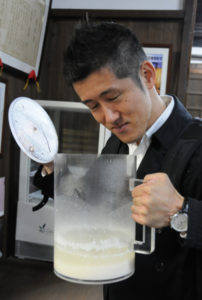 Altogether, I spent three hours with Kotaro and his sake, and I found it a very intoxicating experience in all respects, and I cannot recommend it too highly. The only complaint I have is that the name is not well-chosen: this was not just any standard sake experience, it was a master class! I now know exactly what to look for when buying sake (for myself and others) and I feel like the only way I could learn more about sake would be by making it myself (which is not on the agenda. For now.)
Altogether, I spent three hours with Kotaro and his sake, and I found it a very intoxicating experience in all respects, and I cannot recommend it too highly. The only complaint I have is that the name is not well-chosen: this was not just any standard sake experience, it was a master class! I now know exactly what to look for when buying sake (for myself and others) and I feel like the only way I could learn more about sake would be by making it myself (which is not on the agenda. For now.)
If you are coming to Kyoto and want to know more about sake, and especially if you want to find the right sake for you, do take Kotaro’s Sake Master Class. I promise, you will never need another sake tasting again!
Disclaimer: I received a free sake experience in return for an honest review. A much shorter version of this will be posted on What’s up in Kyoto as well.
 And, our book “Encounters With Kyoto – Writers in Kyoto Anthology 3” is now available on amazon in paperback! An e-book version is in preparation and there’s lots of fun stories to read. For example, there is a very interesting non-fiction piece on ropes made with human hair that were used to lift the wooden beams of Higashi Honganji Temple – some of the ropes are still on display there. Or the lovely poems full of childhood memories by a local Kyoto lady. And then there’s my essay about a Japanese garden I was not supposed to enter… My personal favourite is a fun piece on an encounter with yakuza – in the sento to boot!
And, our book “Encounters With Kyoto – Writers in Kyoto Anthology 3” is now available on amazon in paperback! An e-book version is in preparation and there’s lots of fun stories to read. For example, there is a very interesting non-fiction piece on ropes made with human hair that were used to lift the wooden beams of Higashi Honganji Temple – some of the ropes are still on display there. Or the lovely poems full of childhood memories by a local Kyoto lady. And then there’s my essay about a Japanese garden I was not supposed to enter… My personal favourite is a fun piece on an encounter with yakuza – in the sento to boot!

